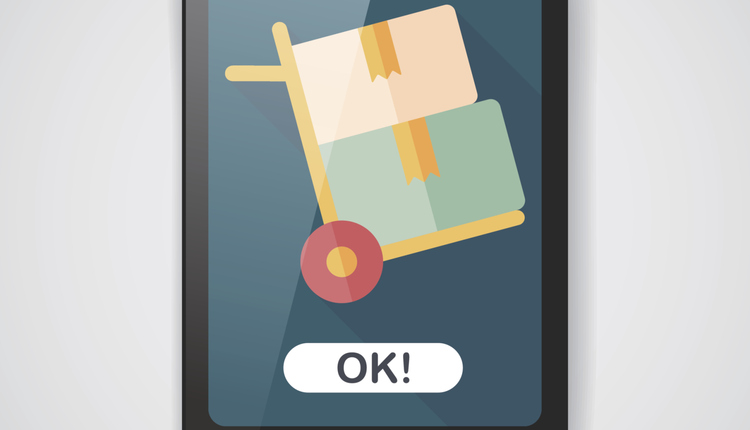Timely delivery of mail can drastically impact its effectiveness. Whether timing a coupon to correspond to a key weekend, sending invoices to ensure payment, or scheduling follow-up communication via email or social media, getting the mail delivered in time is essential. Mail owners look to their mail service providers to ensure that the right message is delivered at the right time. We've all received a sale notification well after the offer expired - don't let this happen to your mailings!
Earlier this year, USPS announced they will no longer process First-Class mail for overnight delivery. All classes of mail could be affected by delays in processing due to plans to close processing facilities as soon as May this year. Mail that predictably took three, seven or 20 days to deliver will likely be changed by the restructuring USPS has planned. But, there are steps you can take now to eliminate some of the uncertainty.
Get educated. Talk to the people working at the USPS facilities you use today, to see if they are targeted for closure. If your centers will stay open, check if other facilities will be consolidated into them. Either scenario will affect how your mail is handled locally. You can also read up on USPS plans at http://bit.ly/usps-plans. In addition to closures, many Critical Entry Times (CETs) and Critical Acceptance Times (CATs) will be updated, especially for processing First-Class mail. You may need to adjust when you drop your mail to ensure it gets processed in a timely manner.
· Start tracking your mail. Tracking information is now free for all users of the Intelligent Mail barcode (IMb), and just in time. By tracking your mail now, you can analyze current delivery times, giving you a baseline for expected delivery times. As consolidations start, you can compare the new delivery times to see where any bottlenecks occur. You can get the raw data directly from the USPS IMb Tracing program, or there are several tracking programs available that can analyze the data for you.
· Review your mailing containers. Generally, mail that is more finely sorted is delivered faster. For example, an envelope in a tray going to a 5-digit ZIP code can be delivered faster than the same envelope in a tray with pieces going all over the country. These "mixed" containers are broken out by USPS and processed through more automation equipment, which can cause delays. To create more finely sorted containers, check your settings in your presort setup. You can also create higher density by combining mailings of the same format.
· Investigate Drop Shipment. In addition to the discounts available by drop shipping, in many cases you can get your mail delivered faster too. By sending your containers to their final USPS sorting facility, you can cut out a lot of the transportation time. For individual trays and sacks, USPS offers Priority Mail Open and Distribute (PMOD).
You can ship your trays and sacks up to 70 pounds via Priority Mail, and get your mail to its final Sectional Center Facility (SCF) in just two days. In some cases, the SCF discount on those pieces can justify the costs of Priority Mail delivery. For bigger shipments on pallets, several logistics companies can transport your mail to the final SCF. In many cases this can be faster than the USPS transportation for Standard Mail. Again the discounts can help pay for the cost of shipment.
· Reschedule mail drops. Sometimes your best efforts won't match sending the mail out earlier. Talk to your customers now about these changes. Let them know that a few extra days lead time could make the difference between a great mailing response and a flop.
Don't wait for facilities to start closing before creating your backup plan. Expect delays to happen, but taking a few steps now can put you in the driver's seat when changes occur.
Earlier this year, USPS announced they will no longer process First-Class mail for overnight delivery. All classes of mail could be affected by delays in processing due to plans to close processing facilities as soon as May this year. Mail that predictably took three, seven or 20 days to deliver will likely be changed by the restructuring USPS has planned. But, there are steps you can take now to eliminate some of the uncertainty.
Get educated. Talk to the people working at the USPS facilities you use today, to see if they are targeted for closure. If your centers will stay open, check if other facilities will be consolidated into them. Either scenario will affect how your mail is handled locally. You can also read up on USPS plans at http://bit.ly/usps-plans. In addition to closures, many Critical Entry Times (CETs) and Critical Acceptance Times (CATs) will be updated, especially for processing First-Class mail. You may need to adjust when you drop your mail to ensure it gets processed in a timely manner.
· Start tracking your mail. Tracking information is now free for all users of the Intelligent Mail barcode (IMb), and just in time. By tracking your mail now, you can analyze current delivery times, giving you a baseline for expected delivery times. As consolidations start, you can compare the new delivery times to see where any bottlenecks occur. You can get the raw data directly from the USPS IMb Tracing program, or there are several tracking programs available that can analyze the data for you.
· Review your mailing containers. Generally, mail that is more finely sorted is delivered faster. For example, an envelope in a tray going to a 5-digit ZIP code can be delivered faster than the same envelope in a tray with pieces going all over the country. These "mixed" containers are broken out by USPS and processed through more automation equipment, which can cause delays. To create more finely sorted containers, check your settings in your presort setup. You can also create higher density by combining mailings of the same format.
· Investigate Drop Shipment. In addition to the discounts available by drop shipping, in many cases you can get your mail delivered faster too. By sending your containers to their final USPS sorting facility, you can cut out a lot of the transportation time. For individual trays and sacks, USPS offers Priority Mail Open and Distribute (PMOD).
You can ship your trays and sacks up to 70 pounds via Priority Mail, and get your mail to its final Sectional Center Facility (SCF) in just two days. In some cases, the SCF discount on those pieces can justify the costs of Priority Mail delivery. For bigger shipments on pallets, several logistics companies can transport your mail to the final SCF. In many cases this can be faster than the USPS transportation for Standard Mail. Again the discounts can help pay for the cost of shipment.
· Reschedule mail drops. Sometimes your best efforts won't match sending the mail out earlier. Talk to your customers now about these changes. Let them know that a few extra days lead time could make the difference between a great mailing response and a flop.
Don't wait for facilities to start closing before creating your backup plan. Expect delays to happen, but taking a few steps now can put you in the driver's seat when changes occur.













